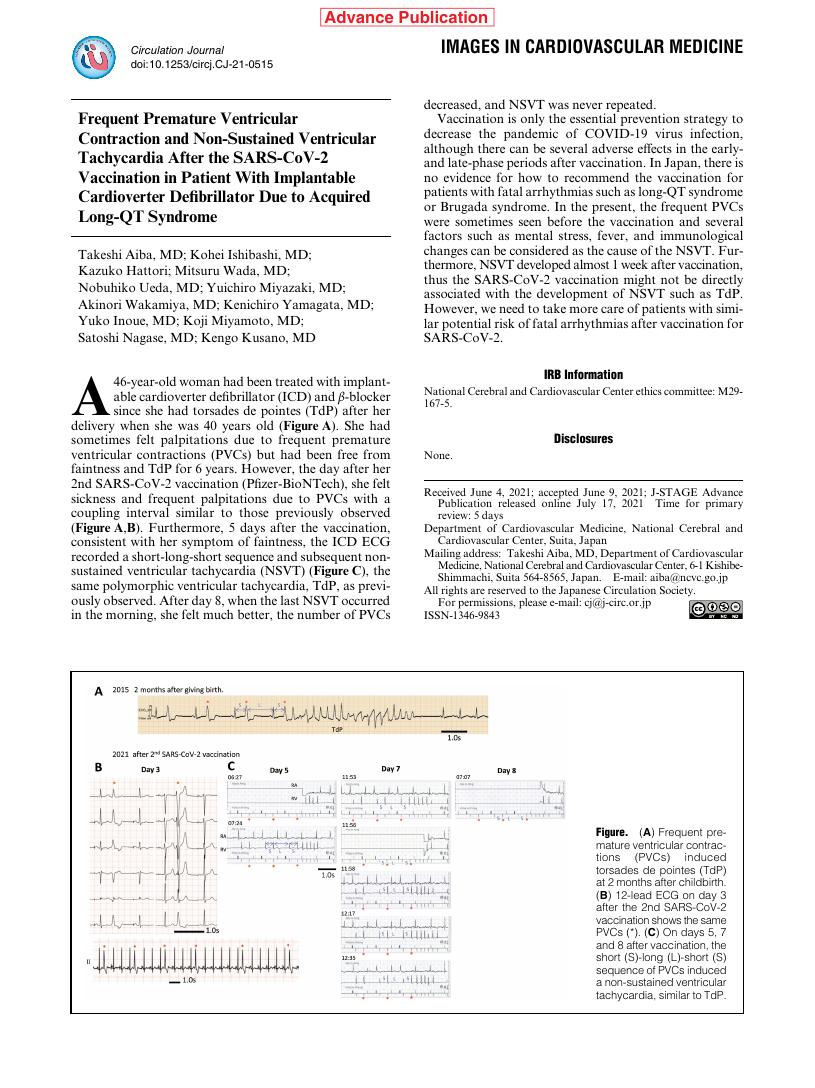- 著者
- Takeshi Aiba Kohei Ishibashi Kazuko Hattori Mitsuru Wada Nobuhiko Ueda Yuichiro Miyazaki Akinori Wakamiya Kenichiro Yamagata Yuko Inoue Koji Miyamoto Satoshi Nagase Kengo Kusano
- 出版者
- The Japanese Circulation Society
- 雑誌
- Circulation Journal (ISSN:13469843)
- 巻号頁・発行日
- pp.CJ-21-0515, (Released:2021-07-17)
- 被引用文献数
- 6
- 著者
- Nobuhiko Ueda Takashi Noda Koshiro Kanaoka Yuichiro Miyazaki Akinori Wakamiya Kenzaburo Nakajima Tsukasa Kamakura Mitsuru Wada Kenichiro Yamagata Kohei Ishibashi Yuko Inoue Koji Miyamoto Satoshi Nagase Takeshi Aiba Hideaki Kanzaki Chisato Izumi Teruo Noguchi Satoshi Yasuda Kengo Kusano
- 出版者
- The Japanese Circulation Society
- 雑誌
- Circulation Journal (ISSN:13469843)
- 巻号頁・発行日
- pp.CJ-23-0547, (Released:2023-12-05)
- 参考文献数
- 27
Background: Atrial tachyarrhythmias (ATAs) are reportedly associated with ventricular arrhythmias (VAs). However, little is known about the association between ATA duration and the risk of VA. We investigated the relationship between ATA duration and subsequent VA in patients with a cardiac resynchronization therapy defibrillator (CRT-D).Methods and Results: We investigated associations between the longest ATA duration during the first year after cardiac resynchronization therapy (CRT) implantation and VA and VA relevant to ATA (VAATA) in 160 CRT-D patients. ATAs occurred in 63 patients in the first year. During a median follow-up of 925 days from 1 year after CRT implantation, 40 patients experienced 483 VAs. Kaplan-Meier analysis showed a significantly higher risk of VA in patients with than without ATA in the first year (log rank P=0.0057). Hazard ratios (HR) of VA (HR 2.36, 2.10, and 3.04 for ATA >30s, >6 min and >24 h, respectively) and only VAATA (HR 4.50, 5.59, and 11.79 for ATA >30s, >6 min and >24 h, respectively) increased according to the duration of ATA. In multivariate analysis, ATA >24 h was an independent predictor of subsequent VA (HR 2.42; P=0.02).Conclusions: Patients with ATA >24 h in the first year after CRT had a higher risk of subsequent VA and VAATA. The risk of VA, including VAATA, increased with the longest ATA duration.
